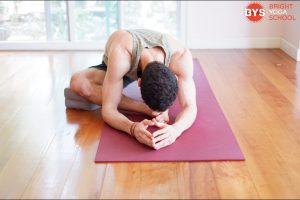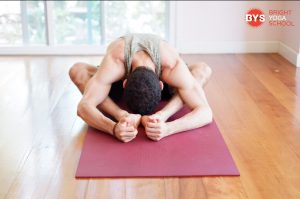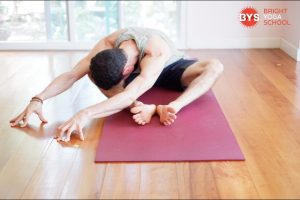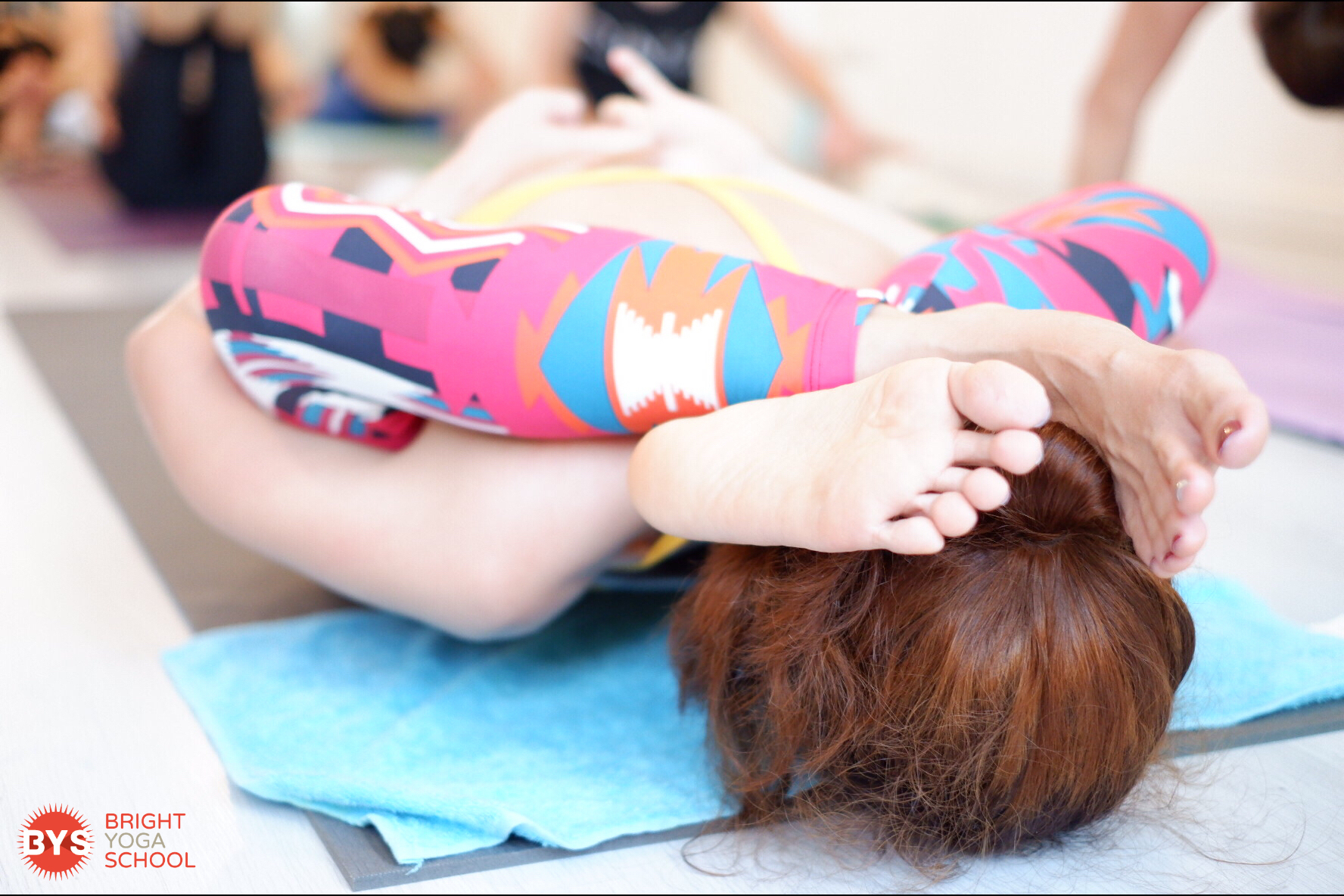Supta Kurmasana is one of the core postures in Ashtanga primary series. This pose requires: deep internal rotation in the shoulders, flexion of the spine, external rotation on the hips and flexibility in the adductor muscles
Internal rotation of shoulders
In the sequence, some poses will prepare you for the shoulder rotation that you need, asanas like Prasarita Padottanasana C, Parsvottanasana and Marichyasana A- D
If you can put the legs behind the head or cross the feet in front of the head, but you cannot reach your hands behind the back, staying in the poses mentioned above for 8- 10 breathes it is going to help you to lose the shoulders and create the need it flexibility for Supta Kurmasana.
External rotation on hips
In case that you can bind the hands but can’t cross the feet, this will be due to a lack of ability in externally rotating the hips. All the Marichyasanas will help you to work in this mobility
You can also hold Kurmasana for 8- 10 breathes keeping the legs close the side of the body and lift the heals up, this will work as well in the external rotation of the hips
Flexibility in the adductor muscles
In the standing sequence, all the Prasarita Padottanasana are excellent preparation. Bring your torso thru the legs and hold all this variation for at least eight breathes
Flexion of the spine
To achieve deep flexion of the spine, it is necessary that you can round your spine. Poses like Janu A-C will work in the mobility of the spine, instead of work with the back straight, try to bring the shin or the forehead to the knee, as you keep the hips grounded
If you have all these qualities but still can’t get into the poses, it is time to have a closer look in the proportions of the body.
Short arm and legs and long spine
This combination will make this asana extremely difficult as you will need a deep external rotation in the hips, deep internal rotation in the shoulder joint and even so, perhaps you will still need to use a strap or towel to facilitate the bind
Possess that can help you to deepen the internal rotation is Parsvotanasa and Marichyasanas. Move reverse prayer hands in Parsvottanasana and the bind in Marichyasana higher in the back
To work in the external rotation, according to the proportions mentioned above, some new poses have to be added out of practice.
Pigeon Pose
With the right shin bone parallel to the top of the mat and the foot in line with your heart center, rest your upper body down.
To go deeper in this pose walk your hands to the left away from the sole of the feet
Approach to this asana as a Yin Yoga pose, surrender and let the gravity facilitate the stretch
At the beginning can be right that you use props to assist you as you hold this asana
Stay in the pose for 2- 3 minutes

Wider Baddhakonasa
Put your legs in a diamond shape, bring your upper body down. Your face should be behind your feet and your knees as close as possible to the ground. Stay for 2- 3 minutes
Second variations walk your upper to one side stay 2- 3 minutes followed by the other side


Advise
It is also important to recognize, that if you have had a regular practice and after trying many alternatives exercises Supta Kurmasana didn’t improve, take a modification instead.
Use a modification that can bring you as close as possible to the full version of the pose that is not creating any pain in the ligaments and joints and move forward in the sequence.
Pattabhi Jois used to say that not all the poses are for everybody.
Practice with awareness and let your body gradually open, always feel your body and breathe as you move thru the sequence.
